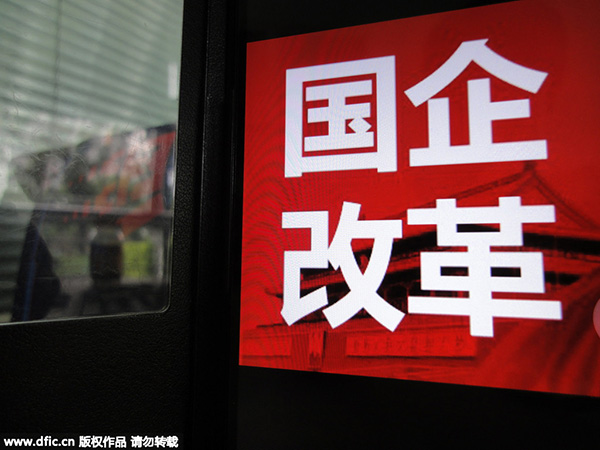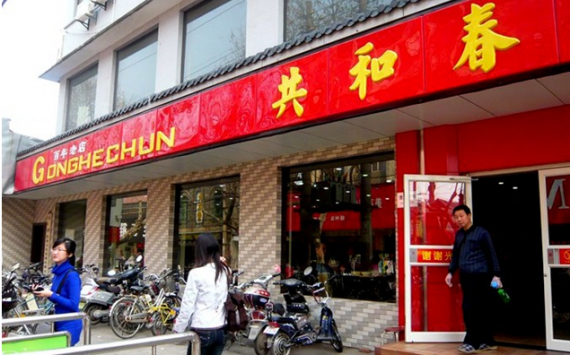Shale Gas, China’s Very Buried Treasure — Nikkei Asian Review
Water, water not a drop to drink. While that may not precisely sum up China’s dilemma, it is clear that the country with the world’s largest shale gas reserves, and urgent need to extract it,  will have problems achieving its ambitious long-term goals. The newly-finalized Five Year Plan calls for an enormous increases in natural gas output in China. The carbon emission reduction agreement signed by President Obama and Chinese leader Xi Jinping also requires China to diversify away from coal. Shale gas is the obvious replacement.
As of now, virtually all that gas remains trapped in the ground. The two companies given the plum rights to develop the gas, China’s oil giants Sinopec and PetroChina, may not have the technical competence to fully develop the resource. The companies that have the skills, mainly a group of small entrepreneurial US drillers, has so far shown zero inclination to either come to China or come to the aid of the two SOE giants by providing equipment and know-how.
To attract them to China will likely require a significant shift in the way China’s energy resources are owned and allocated. It will mean creating terms in China every bit as favorable, if not more so, than skilled shale gas drilling companies enjoy in the US and elsewhere.
This is why for China’s senior leaders and economic planners, this map is as much a curse as blessing. Knowing that vast quantities of much-needed clean energy is in the ground but not having the domestic infrastructure and technology to get it to market efficiently is about as tough and frustrating as any economic problem China now confronts.
The Chinese policy goal and the on-and-in-the-ground situation in China are on opposite sides of the spectrum. China has said it must quickly increase the share of natural gas as part of total energy consumption to around 8% by the end of 2015 and 10% by 2020 to alleviate high pollution resulting from the country’s heavy coal use. Â The original target announced with great fanfare was for shale gas production to increase almost 200-fold between 2012 and the end of the decade. But, this goal was quietly slashed by 30% last year. More slashes may be on the way.
What’s most needed and in shortest supply in China: more commercial competition, more players, more market signals.
Based on the US experience, drilling for shale gas isn’t the kind of thing that big oil companies are good at. Unfortunately for China, all it has are giants. Rather inefficient ones at that. Sinopec, PetroChina are, based on metrics like output-per-employee, perhaps only one-tenth as efficient as the majors like Royal Dutch Shell, Exxon and BP. Note, these big Western companies all pretty much missed the boat with shale gas. In other words, the bigger the oil company the worse it’s been so far at exploiting shale gas. Yes, it’s these big global giants who now seem the most interested to work with Sinopec and PetroChina to develop shale gas China. In fact, Shell is already partnered up with Sinopec. How’s this likely to work out? Think of a pack of elephants ice fishing.
China’s dilemma comes down to this: it’s probably the most entrepreneurially-endowed country on the planet, but entrepreneurs are basically not allowed in the oil and gas extraction businesses. It’s a legacy of old-style Leninism, that the state must hold control over the pillars of the economy. It works okay when the problem is pumping petroleum or natural gas from giant onshore or offshore fields. But, shale gas is another world, with many and smaller wells. A typical one in the Barnett Shale gas region of Texas costs $2mn – $5mn, barely a rounding error for large oil and gas companies. These smaller wells, depending on prevailing price and drilling direction, can achieve a return within one year or less.
Profits are usually much higher for shale wells with horizontal drilling capability. But, it’s also much trickier to do. Production drops off dramatically in most shale gas wells, falling by about 90% during the first two years. So, you need to know how to make money efficiently, quickly, then move on to another opportunity.
The one place where Sinopec is now producing a decent amount of shale gas, at field in Sichuan province, the cost of getting the gas out of the ground is running at least twice the US level. Partly its geography and partly it’s the fact giant state-owned companies operating in a competition-free environment usually need three dollars to do what an entrepreneurial company can do for one.
China was the first country to drill successfully for oil, over 1500 years ago.  It could use more of that native ingenuity to unlock the country’s buried wealth. The shale gas industry is largely the product of one brilliant and stubborn Greek-American entrepreneur, George Mitchell, who began experimenting with horizontal drilling in Texas about 30 years ago. He had his big breakthrough in 1998. Everyone knew the gas was down there, as they do now in China. The trick Mitchell solved was getting it out of the ground at a low-cost. The company he started Mitchell Energy & Development, now part of Devon Energy, remains at the forefront of shale gas exploration and production.
China needs Mitchell Energy as well its own George Mitchells, who can use their pluck and tolerance for risk to make the gas pay. Not only shale gas, but China is also blessed with equally abundant deposits of coalbed methane. Pretty much all this methane is in the hands of big state-owned coal companies. Talk about a wasting asset. The coal miners have zero expertise, and for now it seems zero incentive to go after this fuel in a big way. Just about everything about the oil and gas business in China is state-owned and price-controlled.
The applause was nearly deafening, especially in the US and Europe, when the leaders of the US and China announced the big agreement to reduce carbon emissions. No one can argue with the sentiments, with the policy goal of creating a cleaner world. But, absent from the discussion are specifics on how China will meet its promises. It’s only going to happen if and when natural gas becomes a major part of the energy mix.
China has of course built pipelines to bring gas from Russia and more are on the way. But, even this huge flow of Russian gas, an expected 98 billion cubic meters per year by 2020, will provide at most 17% of China’s projected gas needs by that year. Clearly then, the most meaningful thing that could happen is for the shale fields in China to be thrown open to all-comers, but especially the mainly-US companies that are experts at doing this. That isn’t happening.
I’ve been in the room with Chinese government officials when the topic was discussed about how to make it enticing for US specialist shale companies to drill in China. There’s a growing understanding this is the right way to go, but still the policy environment remains inhospitable. While China has the most shale gas, there is a lot of it in countries including stalwart US allies like Poland and Australia where the US companies are far more welcome and don’t have to deal with a market rigged in favor of state-owned goliaths. Everyone who wants to see a cleaner China and so a cleaner world should wish above all else that China’s shale and methane fields become a stomping ground rather than a no-go area for great entrepreneurs.
An edited version was published in the Nikkei Asia Review.Â
Click here to download article.Â
–



























